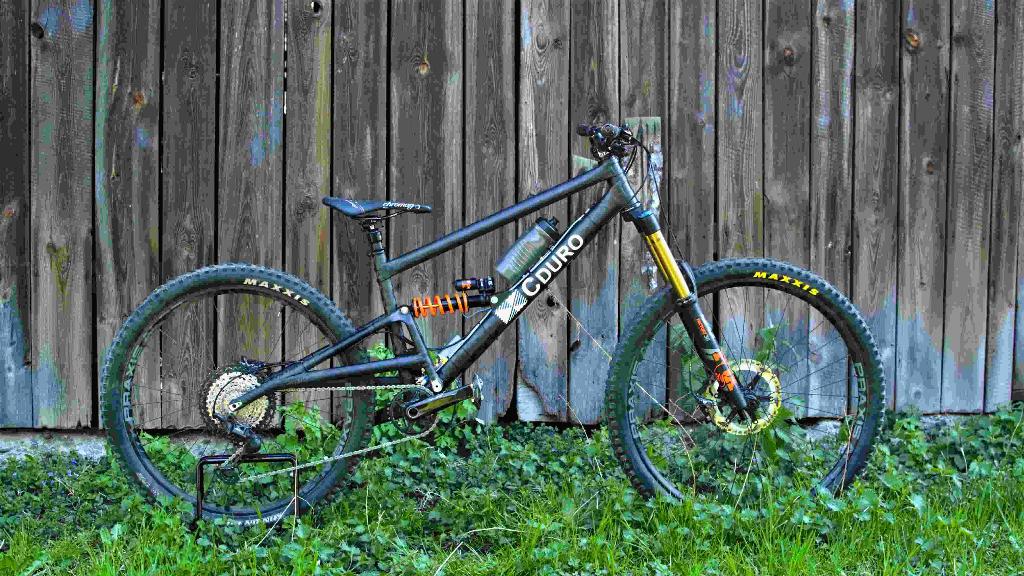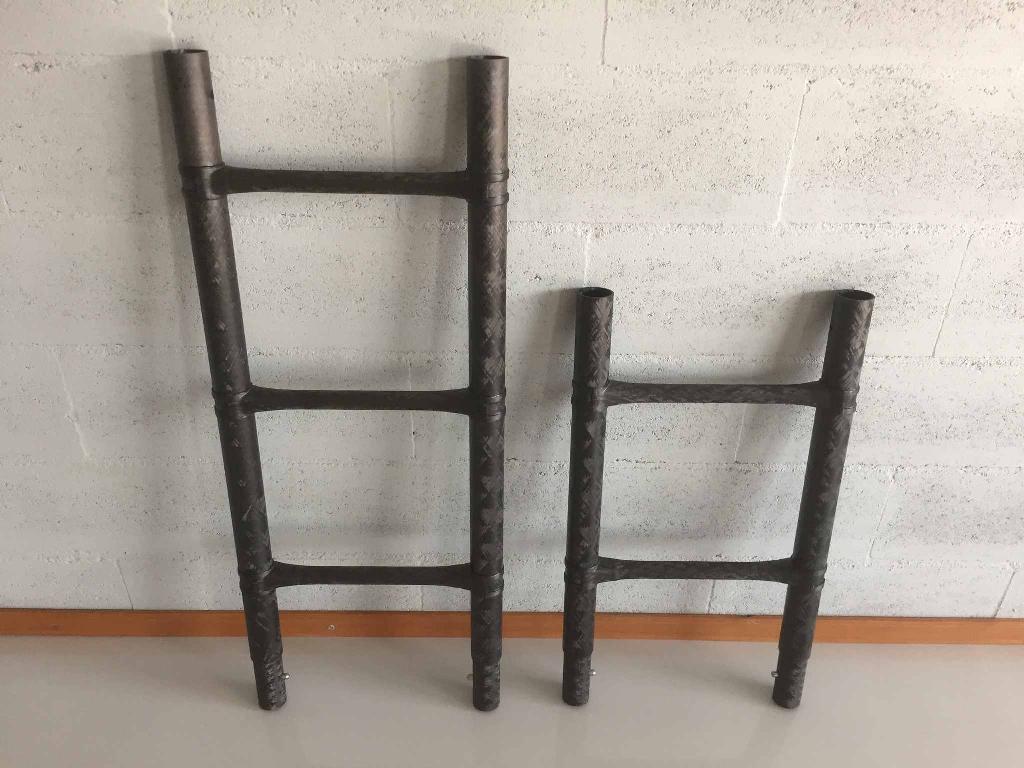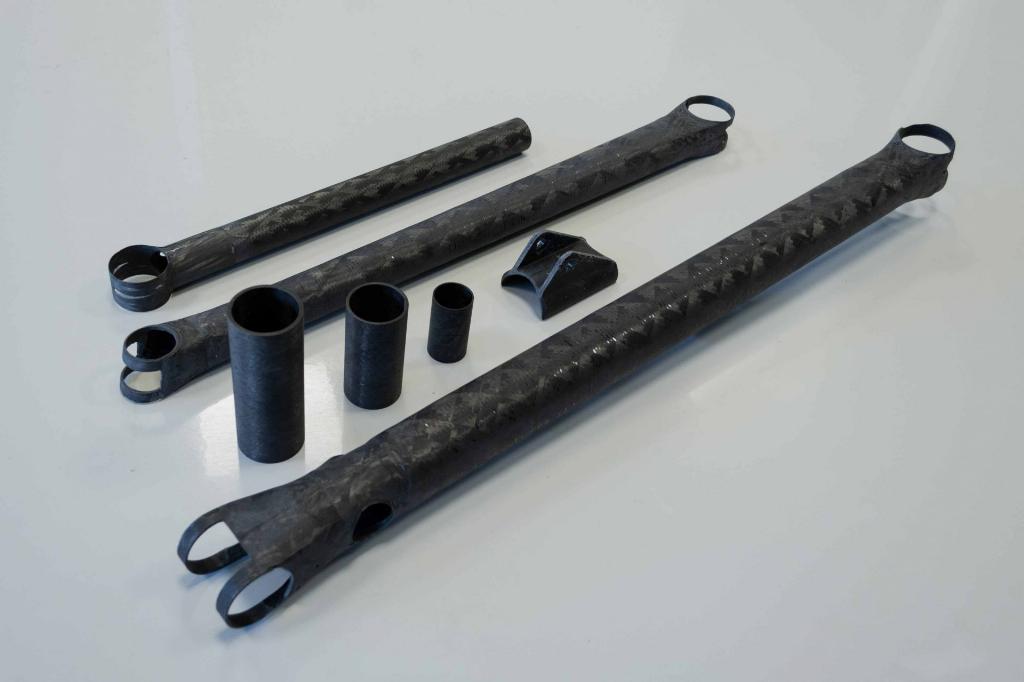Keeping joint design in the loop

CompoTech reveals how its integrated loop technology is helping to provide new design opportunities for high strength carbon fibre epoxy component joints.
CompoTech reveals how its integrated loop technology is helping to provide new design opportunities for high strength carbon fibre epoxy component joints.
A recurring design engineering challenge with composite materials is how to avoid adding weight and losing mechanical performance at stressed, load bearing joints between structural component sections. This is especially the case where over laminating is not sufficient and mechanical fixings are required to achieve the joining performance needed for the end application.
The incorporation of a mechanical fixing and fastener system, which can sometimes be moulded-in, is often a secondary manufacturing step, which adds time and cost; composite parts often need fixture holes drilled through the FRP laminate where bonding is insufficient. The dilemma for many designers is the fact that the drilling of fixture holes cuts through reinforcement fibres, reducing the mechanical properties of the laminate. To overcome this loss of performance, FRP mould designs typically allow for additional layers of reinforcement at load bearing fixing point areas to be built into the composite part during production. However, the downsides are that components become even heavier and further material cost is added.
Czech Republic-based CompoTech has developed a continuous axial fibre integrated loop technology (ILT) process which can overcome joint design issues. It offers manufacturers an automated system for rapid and cost-effective production of lighter and stronger FRP epoxy composite tubular structural parts with fully integrated joints between sub-assembly components.
Key ILT production and performance benefits include:
- Efficient material use - can eliminate carbon fibre reinforced patches or over laminated joints.
- Reduced machining - joint hole designed into the ILT filament placement process.
- Reduced overall production and labour time - higher productivity, lower part costs achievable.
- Stronger joints - specifically parts with tension or bending stresses

CompoTech is validating its latest innovative technology in-house with a number of ongoing development projects to demonstrate the productivity, performance and commercial benefits of its ILT automated production process. A key project has been the successful manufacture of a CompoTech in-house designed ‘enduro’ mountain bike frame prototype, using its integrated loop process for the joints of all the interconnected epoxy carbon bike frame sub assembly components. The project has demonstrated that an ILT epoxy carbon bike frame can be manufactured in half the time compared to currently used assembly methodologies.
As well as custom producing carbon epoxy components, the company has a strategic business objective to offer ILT licences to manufacturers interested in using this new technology to produce and source products locally rather than import from another trade region. This is becoming more important to help reduce the carbon footprint across the supply chain. ILT enables an automated producer to be much more responsive and cost competitive, especially in supplying parts to markets currently dominated by major exporters, such as composite bike frame manufacturers with very low labour costs for hand layup and assembly.
Continual development of fibre laying technology
Established in 1995, CompoTech’s production, design engineering and R&D facilities are located in Sušice in the south west of the Czech Republic. The company now has over 50 employees, including more than 20 technical roles in research and development, design and production engineering. Key investments were made in recent years to provide six axis fibre placement and in-house rapid tool making capabilities using 3D printing.
Since then, the highly technical CompoTech team has designed, manufactured and supplied a wide variety of lightweight, vibration damped, carbon fibre (CF) epoxy composite cylindrical and rectangular beams. All parts are made using a wet, two-part epoxy resin system, cured in two stages; first in a hot box at 50°C and then in an oven.
CompoTech’s original success was founded on the development of its own axial fibre layup using ‘pin’ winding automated production technologies. The performance benefits are that a carbon epoxy beam produced with true zero-degree fibres in tension has 10 to 15% higher stiffness in the axial direction and up to 50% greater bending strength compared to using conventional filament winding techniques.
By combining both ILT and axial fibre placement processes, CompoTech can cost effectively produce high performance complex shaped, thin or thick walled, FRP epoxy composite parts with three-dimensional continuous fibre reinforcement. The adapted filament winding technique can place continuous axial direction along the length of a component. The loop technology is used to accurately place fibres at the beam ends to create fully integrated joint connections.
CompoTech’s CF epoxy components typically replace conventional steel and aluminium, providing a range of vibration, deflection, distortion, speed, productivity and energy saving benefits in use. Successful applications include: industrial machine tool beams; drive shafts; automated automotive press line booms and crossbars; crop sprayer booms; aerospace structures; yacht masts and spars; and recently bike frame components.
The new integrated loop manufacturing capability is CompoTech’s latest continuous fibre placement automated processing innovation for advanced composites. It has taken the company’s proven ‘hybrid’ automated fibre layup (AFL) processing technologies to the next level by incorporating clever 3D printed custom-made fibre pin tooling to create a fully integrated joint hole with no breaks in the carbon fibres. The ILT process eliminates the need for moulding heavier wall thickness sections around a fixture area and for any post mould drilling. It opens up new design options and offers product manufacturers a more cost-effective way to take advantage of the application benefits from using high performance, lightweight, tubular FRP composite components.
Joint production capabilities
CompoTech’s ILT production processes can manufacture a single large hollow integrated loop end joint or multiple individual loops to accommodate specific fixings and fastener systems; both joining design options are manufactured as a seamless, integral part of the main carbon fibre epoxy tube sub assembly tubular section. Rigorous ISO 9001 quality control accredited systems and checks are in place throughout the design and production process to ensure repeatability and the reliable provision of the required performance properties in each part.
Integrated loop joints are typically formed around a metal tooling mandrel. Inserts, such as a metal sleeve, can also be incorporated inside the looped joint section during production. Continuous wet epoxy resin impregnated carbon fibres are accurately placed and directional wound in orientations to provide the required stiffness, compression, flexural and torsional forces needed. Once individual components have been fully-cured, they are then ready to be assembled. The advantage of ILT parts is that fewer assembly parts and production operations are needed; sub assembly components can be positioned and rapidly bonded together by applying a suitable two-part epoxy structural adhesive to the integrated loop contact area. The final bonded ILT joint provides superior performance.
Oval, round and tapered epoxy carbon composite tubes in one piece up to 12m long and with a diameter of up to 2m can be produced by CompoTech with integrated loop joints at one or both ends as required. The 3D printed custom tooling and process programming used by CompoTech can create beam end junction designs with a specified length, diameter and laminate wall length thickness. Currently, angle capabilities for integrated loop joints of between 60°- 90° can be produced; trials are ongoing to achieve more acute angles down to 45°.
Production benefits
The production benefits of CompoTech’s ILT process are significant when compared with the standard process steps and methodology typically being used to join tubular FRP composite sub assembly components; instead of machining and adding fixings, ILT components are simply bonded into place. By using ILT designed parts, bills of materials (BOMs) can be reduced and costly, time consuming CNC machining and assembly steps can be avoided, which boosts productivity and lowers direct production costs.

This has been clearly demonstrated by CompoTech in the comparative production trials to manufacture a very lightweight, carbon epoxy high performance tactical ladder used by emergency services, law enforcement or military personnel. Humphrey Carter, CompoTech’s Head of Business Development explains: “Our integrated loop technology is ideal for producing ‘dog bone’ design rungs for the modular ladder with an ILT joint at both ends. For a three rung ladder section, we were able to eliminate the need for a reinforcer and insert part at each end, so halved the number of assembly parts needed and saved both cost and weight. Critically, the automated ITL process reduced the total production time by 39% to only eight hours by enabling us to cut out a turning, second milling and third assembly operation.”
The epoxy carbon fibre tactical ladder produced by CompoTech with ILT rung joints is a modular design. Essential specification features for the military ladder included needing to be as light as possible, very high strength, transportable in short sections and quick to assemble and dismantle in the field. Dog bone design ILT coupons, tested during the development phase in conjunction with Czech Technical University (CTU), were produced by CompoTech as part of the new product development process. An indicative test of the load bearing capabilities and end use performance has been rigorously carried out by military personnel in extreme conditions.
Another ongoing in-house ILT project also showing significant production benefits is the Compo Tech designed ‘enduro’ mountain bike prototype, providing a 50% reduction in comparative assembly times, plus reducing overall frame weight and cost. The project has demonstrated that the same epoxy carbon bike frame manufactured using ILT joints can be assembled in about half the time compared to conventionally producing the frame using standard design sub frame joints.
ILT Enduro bike frame
CompoTech co-founder and R&D director Dr Ondřej Uher, who has a passion for mountain biking, explained that: “Mountain biking is very popular in the area, being so close to the beautiful, but challenging, Šumava mountain range, also the venue in the Czech Republic where European Enduro Series (EES) international race events are held.”
Uher has a personal mission to use design engineering and the company’s automated process technology to enable better composite frames to be built more cost effectively by performance bike manufacturers.
A mountain bike is an eye catching, extreme sports application to demonstrate CompoTech’s innovative technology for frame joining and validate the product performance and commercial benefits. CompoTech has been involved in a PhD research project with the Czech Technical University (CTU), which successfully created mathematical models to measure the performance reliability and predictability of bike frame joints in tension, compression, bending and torsion.
CompoTech’s R&D team, which includes CTU graduate and competitive mountain biker Tomáš Ponížil, has designed its own ‘CDURO’ epoxy carbon fibre mountain bike frame. The proprietary fibre winding and integrated loop process technologies were used to manufacture the interconnected frame sub assembly parts, namely the bottom bracket shell, chain stays and the top, head, down and seat tubular sections.

To obtain mechanical properties performance data beyond the R&D laboratory, the completed CDURO prototype mountain bike has been fitted with strain gauge sensors which gather data while being ridden.
The CompoTech ILT jointed development bike is being field tested by Ponížil in training practice runs and competition races on the demanding Šumava mountain Enduro race trails with jumps, rocky areas and steep sections which twist and turn through the trees, pushing both bike and rider to the limits.
“The results from the prototype bike frame measurement data, together with our in-house testing and the outcome of the CTU joint performance research project, will all be used to help validate our loop technology,” explained Ponížil.
The objective is to provide tangible data for designers as to the suitability of ILT, not just for bike frames but also for other demanding applications where structural joints between sub assembly parts is a design challenge.
Carter commented: “Initially CompoTech plans to do small scale production of the one-off design frames. However, the main goal is to demonstrate the technology and to offer our services to end producers in a variety of markets. We are looking to either produce frames for companies to their specifications, or to provide our technology and technical support to enable customers to do their own production under licence.”
Future applications
The CompoTech team has already started looking at possible markets, products and applications where connected composite parts with ILT joints could add value. A new academic project was recently started to evaluate new designs for lightweight mobile lifting equipment and cranes, to reduce the overall payload weight of the van or truck and increase maximum lifting capabilities by reducing the weight of the framework. There is also the opportunity to use the integrated loop process to reduce weight in drive shafts and hydraulic systems.
Products that use a framework and structural parts with integrated bushes are seen as key redesign target areas, especially modular systems. CompoTech also sees its new integrated loop process as an opportunity to build upon the existing business success in industrial automation, handling and machine systems, enabling OEM design engineers to develop lighter automation arms and actuators which need smaller lower specification power units and drive systems. The subsequent cost, productivity and environmental benefits to companies using the equipment are very attractive, being able to run production lines faster, with less wear and tear and lower energy consumption. The expectation from CompoTech is that these benefits will provide a strong enough commercial case for some manufacturers to add this capability to its production plants and invest in licencing this highly innovative automated integrated loop continuous axial fibre placement technology.








